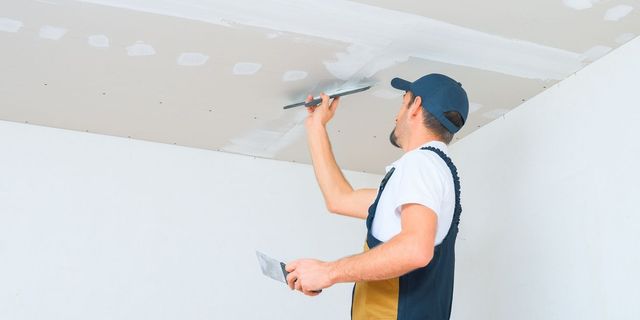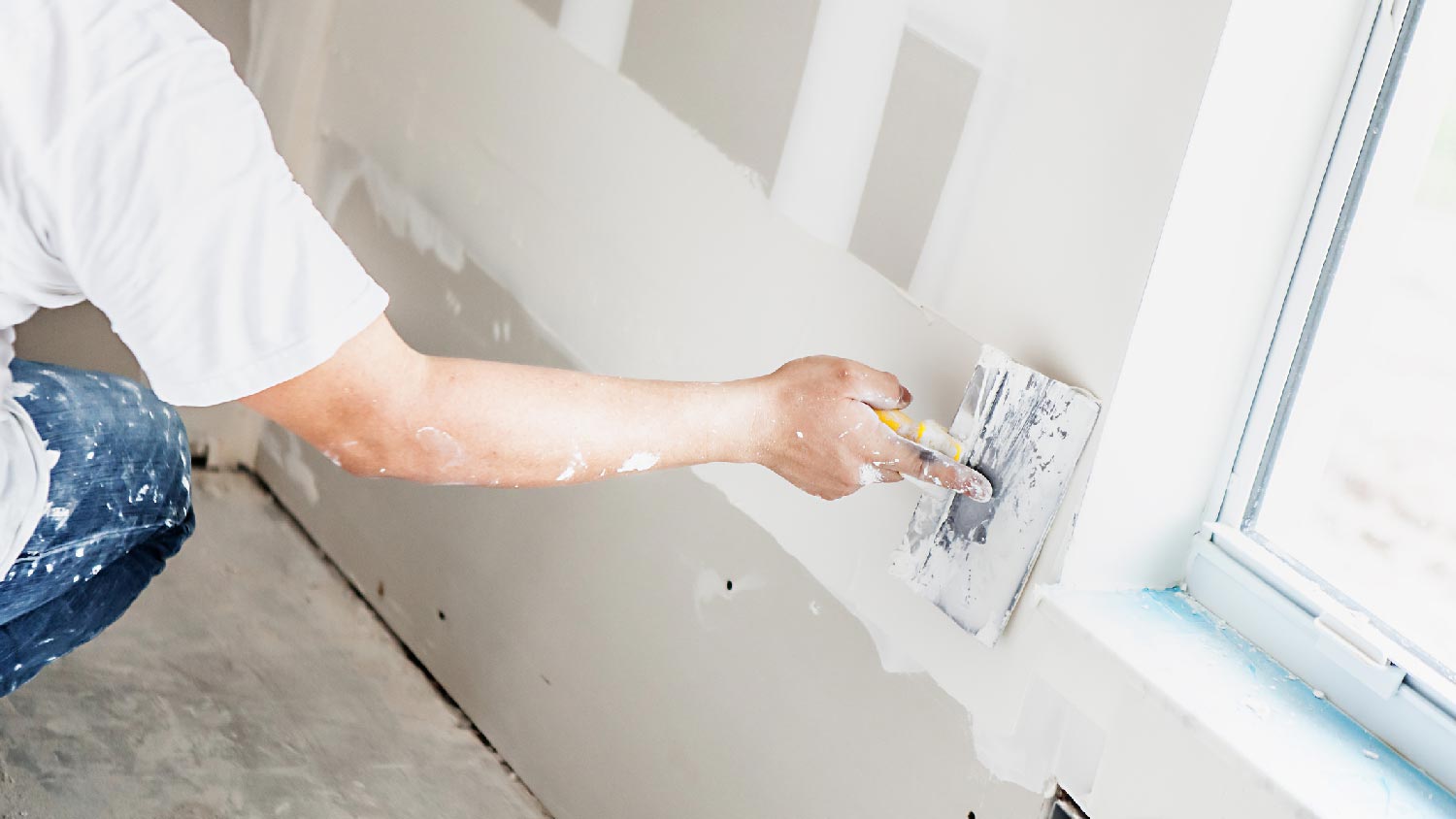Learn proven techniques from local drywall contractors to perfect your Interior Painting projects.
Important Tips for Effective Drywall Repair Service and Setup Methods
Effective drywall repair service and installment needs a careful technique. Comprehending the kinds of drywall and having the right tools is essential. Correct strategies and exact measurements can significantly influence the end result. Several forget necessary actions like taping and sanding, which can make or damage the last appearance. As jobs progress, typical challenges might emerge that call for attention. Discovering these pointers can cause a more polished and effective surface.
Comprehending Various Sorts Of Drywall
Understanding the numerous sorts of drywall is necessary for any type of successful fixing or setup job. Drywall, commonly known as gypsum board, is available in several selections customized for details applications. Requirement drywall is one of the most widely made use of type, suitable for basic interior wall surfaces and ceilings. Moisture-resistant drywall, commonly eco-friendly in shade, is made for locations prone to moisture, such as washrooms and kitchen areas. Fireproof drywall, typically tinted pink or purple, is crafted to withstand greater temperatures and is frequently made use of in garages or near heating systems. Furthermore, soundproof drywall helps in reducing sound transmission, making it suitable for multi-family homes or videotaping workshops. Specialized drywall, like cement board, is used in wet locations like showers or tub surrounds. Understanding these kinds aids in selecting the right product for each project, guaranteeing durability and effectiveness out of commission or new installments.
Essential Tools for Drywall Repair Work and Installation
Having the right tools is crucial for reliable drywall repair work and setup. A high quality energy knife is crucial for reducing drywall sheets exactly. A drywall T-square assists ensure straight edges, while a taping knife is needed for using joint substance efficiently over seams. Furthermore, a drywall saw permits eliminating damaged sections or fitting drywall around components.
For hanging drywall, a power drill with drywall screws is essential, as it makes it possible for quick and protected setup. A degree is also crucial to verify that the drywall is straight and correctly straightened. A sanding block or pole sander is necessary for smoothing out joint compound once it has dried. Lastly, a determining tape is crucial for precise measurements, avoiding waste and guaranteeing a correct fit. Equipped with these devices, people can deal with drywall tasks efficiently, bring about professional-looking outcomes.
Step-by-Step Overview to Fixing Holes and Cracks
When addressing holes and fractures in drywall, having the right tools and materials is necessary for a successful repair service. This guide outlines the essential things and offers a clear, step-by-step procedure to effectively bring back the surface area. Comprehending these components will certainly assist ensure a smooth finish and resilient outcomes.
Tools and Materials Needed
A well-equipped toolkit is crucial for efficient drywall fixing and installation. Secret devices consist of an energy knife for cutting drywall, a tape procedure to guarantee accurate sizing, and a drywall saw for larger holes. A putty blade is vital for using joint substance efficiently, while a sanding block or post sander helps achieve a seamless surface. For patching, a roll of fiberglass mesh tape or paper tape is required to reinforce joints. Additionally, a drill and screws are required for safeguarding new drywall pieces. Crucial products consist of joint compound, primer, and paint to finish the repair work. Having these devices and products handy guarantees a smoother, extra effective fixing process, producing professional-looking results.
Repair Service Refine Actions
Repairing holes and fractures in drywall needs a systematic method to ensure a seamless surface. The location surrounding the damage needs to be cleaned up thoroughly to remove dust and particles. Next off, for small fractures, a putty blade is utilized to use a joint compound evenly over the location. For bigger holes, a spot is required; the damaged section is eliminated, and a new item of drywall is fitted in location, protected with screws. As soon as the spot remains in setting, joint substance is related to blend the edges. After drying out, sanding the area smooth is crucial. The fixed surface needs to be keyed and painted to match the bordering wall, making sure an inconspicuous repair service.
Techniques for Setting Up Drywall Panels
Mounting drywall panels calls for careful planning and exact execution to ensure a smooth and specialist coating. First, it is vital to measure the wall surface area accurately and cut the panels to fit, guaranteeing that they align with the studs. Positioning the panels horizontally is commonly suggested, as this see post can boost the structural honesty and minimize the variety of joints.
Making use of drywall screws, installers ought to secure the panels every 16 inches along the studs, making certain a firm hold. It is essential to prevent overdriving the screws, which can harm the paper surface area. For corners and edges, making use of an energy knife permits clean cuts and a tight fit.

Finishing Touches: Insulation, Mudding, and Fining sand
Once the drywall panels are safely in location, the following essential step involves the finishing touches of taping, mudding, and sanding. Taping is necessary for producing a seamless change in between panels and concealing joints. A quality drywall tape, either paper or fiberglass harmonize, need to be used over the seams, guaranteeing it sticks effectively to the mud that will be applied following.
Mudding, or applying joint substance, follows the taping procedure. This substance fills voids and ravel the surface area. A very first layer ought to be applied kindly, feathering the edges to mix with the drywall. After the first coat dries out, subsequent layers may be needed for a perfect finish.
Fining sand is necessary to attain a smooth surface. A fine-grit sandpaper should be made use of to carefully smooth out any type of blemishes. Care should be taken to stay clear of over-sanding, which can damage the drywall - Drywall Installation Ogden Utah. Appropriately implemented, these finishing touches create a specialist appearance prepared for paint
Tips for Preserving Your Drywall After Setup
Maintaining drywall after setup is important to protecting its look and architectural honesty. Routine cleaning is needed; dirt and dirt can build up, so mild cleaning with a wet fabric is suggested. Home owners ought to likewise examine for any kind of signs of dampness or mold and mildew, specifically in high-humidity locations like shower rooms and cooking areas. If any kind of damage takes place, it is essential to address it promptly to avoid Get More Info further issues.
Making use of furniture pads can assist stop scratches or dents from heavy products. Furthermore, painting the drywall with a top quality, washable paint provides an extra layer of security and makes future cleansing easier. Stay clear of using unpleasant cleansers or tools, as these can damage the surface. Maintaining a stable interior environment with proper moisture degrees will certainly help stop fracturing or warping over time. By complying with these suggestions, one can ensure that drywall remains in excellent problem for many years ahead.
Frequently Asked Concerns
The Length Of Time Does Drywall Take to Completely Dry After Installment?

Can I Set Up Drywall Over Existing Drywall?
Yes, drywall can be set up over existing drywall, yet it is vital to guarantee the underlying surface area is protected and appropriately prepared. This approach can improve insulation and decrease installation time, though it might add weight.
What Is the Ideal Method to Soundproof Drywall?
The finest method to soundproof drywall entails making use of specialized soundproofing materials, such as durable networks, acoustic caulk, and sound-dampening drywall. These techniques properly decrease audio transmission between rooms, enhancing overall acoustic performance in living spaces.
How Do I Select the Right Drywall Density?
To choose the ideal drywall thickness, take into consideration the application and area. Criterion property wall surfaces usually make use of 1/2 inch, while ceilings or specialized areas may call for 5/8 inch for extra stamina and soundproofing abilities.
Exist Eco-Friendly Drywall Options Available?
Yes, environment-friendly drywall alternatives are readily available. These include items made from recycled materials, plaster boards with low volatile organic substances (VOCs), and those making use of sustainable production processes, using environmentally-conscious options for construction and improvement jobs.
Having the right devices is important for efficient drywall fixing and setup. For hanging drywall, a power drill with drywall screws is indispensable, as it enables fast and secure installment. Key tools consist of an utility knife for reducing drywall, a tape action to guarantee precise sizing, and a drywall saw for bigger holes. Yes, drywall can be mounted investigate this site over existing drywall, yet it is necessary to assure the underlying surface is secure and properly prepared. The finest means to soundproof drywall includes utilizing specialized soundproofing products, such as durable networks, acoustic caulk, and sound-dampening drywall.